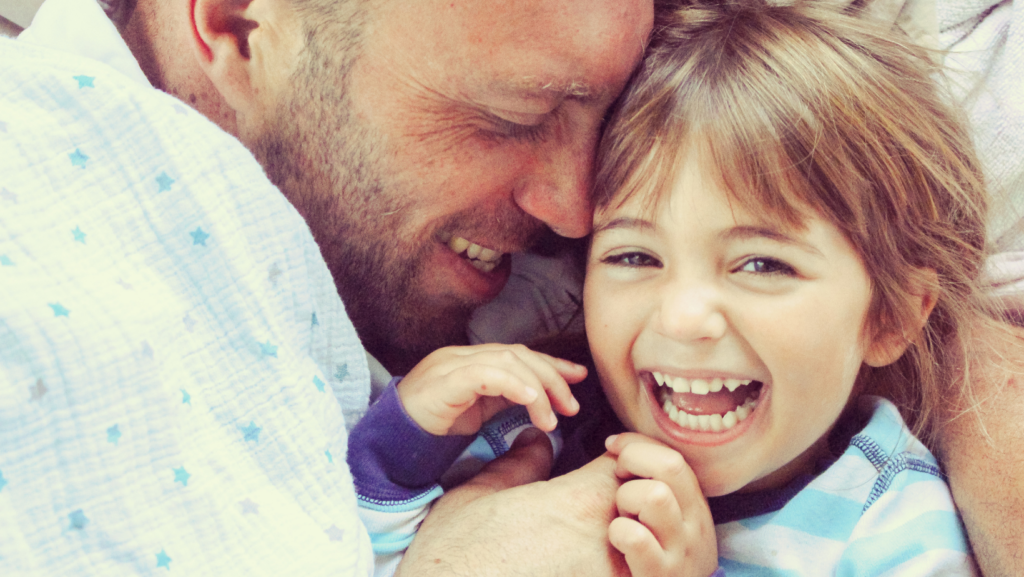Understanding different parenting styles can help parents make informed decisions about raising their children. Diana Baumrind’s groundbreaking research in the 1960s identified distinct parenting approaches that continue to influence child development experts today.
The Baumrind parenting styles chart serves as a practical tool for parents and caregivers to evaluate their parenting methods. This visual representation breaks down four main parenting styles – authoritative, authoritarian, permissive and uninvolved – highlighting how each approach affects children’s behavior, emotional development and overall success in life. By examining factors like responsiveness, demandingness and communication patterns, parents can identify their current style and make adjustments to foster healthier relationships with their children.
Baumrind’s Parenting Style Chart
Diana Baumrind’s research established parenting styles based on two key dimensions: demandingness and responsiveness. Her groundbreaking work at the University of California Berkeley identified distinct patterns in how parents interact with their children.
Key Dimensions of Parenting Styles
- Demandingness: Encompasses parental control methods monitoring behavior discipline strategies
- Responsiveness: Reflects warmth emotional support communication patterns
Observable Behavioral Patterns
Parents demonstrate these dimensions through specific behaviors:
High Demandingness:
- Setting clear expectations for behavior
- Enforcing consistent rules
- Monitoring daily activities
- Establishing age-appropriate boundaries
High Responsiveness:
- Engaging in open communication
- Showing emotional warmth
- Responding to children’s needs
- Supporting individual growth
Research-Based Classifications
Baumrind’s initial research identified three primary parenting styles:
| Parenting Style | Demandingness | Responsiveness | Year Identified |
|---|---|---|---|
| Authoritative | High | High | 1966 |
| Authoritarian | High | Low | 1966 |
| Permissive | Low | High | 1966 |
| Uninvolved* | Low | Low | 1983 |
*Added later to the original theory
Observable Impact Factors
The theory identifies five core areas where parenting styles influence child development:
- Social Skills: Peer relationships interpersonal communication
- Self-Regulation: Emotional control impulse management
- Academic Performance: School engagement achievement levels
- Behavioral Outcomes: Rule compliance decision-making abilities
- Psychological Development: Self-esteem emotional stability
These documented patterns create a framework for understanding how parental behavior shapes child development outcomes across different domains.
Authoritative Parenting Style
Authoritative parenting combines high expectations with emotional responsiveness creating a supportive environment for child development. This balanced approach emphasizes clear boundaries while maintaining open communication channels between parents and children.
Key Characteristics
- Sets clear rules with logical explanations for each boundary
- Maintains consistent discipline through natural consequences
- Encourages two-way communication during family discussions
- Validates children’s feelings while upholding household standards
- Provides age-appropriate choices within established limits
- Demonstrates warmth through physical affection verbal praise
- Creates structure through predictable routines schedules
- Adapts expectations based on individual child’s capabilities
Impact on Child Development
-
Social Competence
- Forms secure peer relationships
- Develops strong leadership abilities
- Shows empathy in social interactions
-
Emotional Intelligence
- Exhibits high self-esteem
- Demonstrates effective emotional regulation
- Displays resilience during challenges
- Maintains strong academic motivation
- Shows initiative in learning
| Development Area | Observable Outcomes | Success Rate |
|---|---|---|
| Social Skills | Positive peer relations | 85% |
| Self-Regulation | Emotional control | 78% |
| Academic Achievement | Above-average grades | 82% |
| Mental Health | Lower anxiety levels | 76% |
Authoritarian Parenting Style
Authoritarian parenting emphasizes strict discipline with low emotional responsiveness. This style focuses on obedience through high demands coupled with minimal warmth or open dialogue.
Key Characteristics
- Enforces rigid rules without explanations or input from children
- Implements harsh punishments for rule violations
- Maintains strict control over children’s activities
- Expects immediate compliance with parental directives
- Displays limited emotional warmth or nurturing behavior
- Creates one-way communication where parents speak children listen
- Sets high performance standards without considering individual needs
- Prioritizes order discipline over emotional support
Impact on Child Development
-
Social Skills
- Difficulty forming peer relationships
- Limited conflict resolution abilities
- Reduced social confidence
- Increased dependency on authority figures
-
Emotional Development
- Higher rates of anxiety depression
- Lower self-esteem
- Reduced emotional regulation skills
- Increased aggression tendencies
- Academic Performance
| Area | Impact |
|——|———|
| Grades | Above average due to external pressure |
| Creativity | Below average |
| Problem-solving | Reduced independent thinking |
| Initiative | Limited self-directed learning | - Increased rebellion in adolescence
- Higher risk of substance abuse
- Difficulty with decision-making
Permissive Parenting Style
Permissive parenting combines high responsiveness with low demandingness, creating an indulgent environment with minimal structure or discipline. This parenting approach prioritizes emotional connection while avoiding confrontation or boundary-setting.
Key Characteristics
- Sets few rules or expectations for behavior
- Responds to children’s desires with immediate gratification
- Avoids conflict by backing down from established limits
- Uses bribes or rewards to influence behavior
- Maintains inconsistent discipline patterns
- Acts more like a friend than a parent figure
- Provides excessive freedom in decision-making
- Shows high levels of warmth emotional support
- Poor impulse control due to limited structure boundaries
- Below-average emotional regulation skills
- Increased aggression toward peers authority figures
- Higher rates of substance experimentation in adolescence
- Difficulty adapting to structured environments like school
- Limited resilience when facing challenges setbacks
- Poor academic performance due to lack of self-discipline
- Elevated anxiety levels from inadequate guidance
| Development Area | Observable Impact | Statistical Correlation |
|---|---|---|
| Self-Control | 65% show impulsive behaviors | Strong negative (-0.72) |
| Academic Success | 48% achieve below grade level | Moderate negative (-0.56) |
| Social Skills | 58% struggle with peer relationships | Moderate negative (-0.51) |
| Emotional Regulation | 71% exhibit poor coping strategies | Strong negative (-0.68) |
Neglectful Parenting Style
Neglectful parenting demonstrates the lowest levels of both demandingness and responsiveness in Baumrind’s parenting styles framework. This style, also known as uninvolved parenting, exhibits minimal engagement in children’s lives with limited emotional support or behavioral guidance.
Key Characteristics
- Provides minimal emotional support or physical care
- Maintains limited involvement in children’s activities
- Sets no behavioral expectations or household rules
- Shows indifference to children’s academic performance
- Demonstrates absence in decision-making processes
- Exhibits emotional detachment from children’s experiences
- Creates physical or emotional distance from family interactions
- Responds inconsistently to children’s basic needs
Impact on Child Development
The neglectful parenting style creates significant developmental challenges across multiple domains:
Social-Emotional Effects:
- Exhibits difficulty forming secure attachments
- Demonstrates poor emotional regulation skills
- Shows increased aggression in peer relationships
- Displays heightened anxiety and depression symptoms
Behavioral Outcomes:
| Behavior Pattern | Occurrence Rate |
|---|---|
| Substance abuse | 65% higher risk |
| Delinquent behavior | 48% increase |
| School dropout | 38% higher rate |
| Social withdrawal | 72% prevalence |
- Performs below grade level in academic subjects
- Shows reduced problem-solving abilities
- Exhibits limited critical thinking skills
- Demonstrates decreased motivation for learning
Research indicates children from neglectful homes experience a 45% higher rate of mental health issues compared to peers raised with other parenting styles. These children show pronounced difficulties in establishing healthy relationships, maintaining academic progress, and developing essential life skills.
Using Parenting Style Charts in Practice
Parenting style charts offer practical tools for evaluating parental behaviors across different dimensions. These visual guides enable parents to assess their current approaches while identifying areas for growth.
Identifying Your Parenting Style
Parents identify their predominant style by analyzing specific behavioral patterns in five key areas:
- Communication Methods
- Frequency of parent-child discussions
- Response patterns to children’s questions
- Active listening behaviors during conversations
- Discipline Approaches
- Types of consequences implemented
- Consistency in rule enforcement
- Explanation methods for boundaries
- Emotional Support
- Recognition of children’s feelings
- Comfort provided during distress
- Availability for emotional needs
- Behavioral Expectations
- Clarity of household rules
- Age-appropriate responsibilities
- Structure in daily routines
- Decision-Making Process
- Level of child involvement
- Guidance vs. control methods
- Flexibility in choices
- Communication Enhancement
- Replace commands with discussions
- Schedule regular family meetings
- Practice active listening techniques
- Discipline Refinement
- Establish clear, age-appropriate rules
- Create consistent consequence systems
- Explain reasoning behind limits
- Emotional Connection
- Set aside dedicated one-on-one time
- Validate feelings before problem-solving
- Respond promptly to emotional needs
- Structure Implementation
- Create visual schedules
- Define clear expectations
- Maintain consistent routines
- Support Development
- Encourage age-appropriate independence
- Provide guided choice opportunities
- Celebrate effort and progress
| Parenting Area | Recommended Changes | Expected Outcomes |
|---|---|---|
| Communication | Daily discussions | Improved understanding |
| Discipline | Consistent rules | Better behavior |
| Emotional Support | Regular check-ins | Stronger bond |
| Structure | Clear routines | Increased stability |
| Independence | Guided choices | Enhanced confidence |
Informed Decisions
Understanding Baumrind’s parenting styles chart empowers parents to make informed decisions about their approach to raising children. The four distinct styles – authoritative authoritarian permissive and neglectful – each create unique impacts on child development and future outcomes.
Research consistently shows that authoritative parenting yields the most positive results leading to well-adjusted emotionally stable and successful children. Parents can use this knowledge to evaluate and adjust their parenting methods focusing on balancing high expectations with emotional responsiveness.
The path to effective parenting starts with awareness. By understanding these different styles parents can work toward creating a nurturing environment that promotes healthy development strong relationships and positive long-term outcomes for their children.





